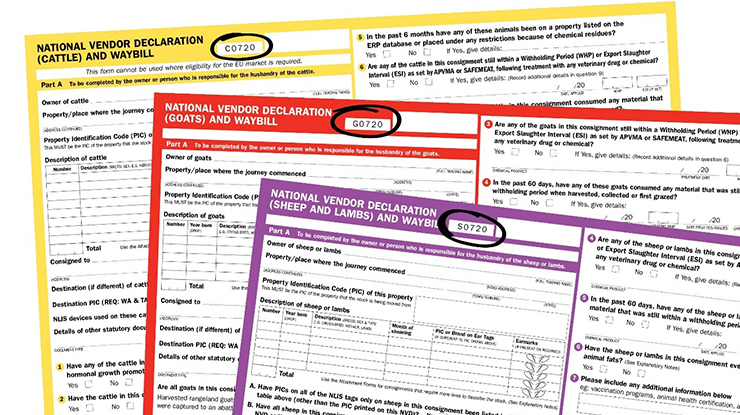New NVD for goats released
25 August 2020
 An updated version of the National Vendor Declaration (NVD) for goats is available now, identified by the version number G0720.
An updated version of the National Vendor Declaration (NVD) for goats is available now, identified by the version number G0720.
An updated version of the National Vendor Declaration (NVD) for goats, identified by version number G0720, is available now.
The earlier version G0517 will be accepted until 31 December 2020. From 1 January 2021, only the updated version G0720 will be accepted.
If you use the electronic NVD (eNVD), it is always the latest version. The eNVD is a faster and easier alternative to hardcopy NVD books and they are available for free via the LPA website. More information on how to complete an eNVD, is available here.
In both formats, the NVD communicates the food safety and treatment status of every animal every time it moves along the value chain – between properties, to saleyards, or to processors.
|
NVD tip - be prepared Fill out as much of the form as possible before you head to the yards to load, to avoid stress and to increase accuracy. |
A suite of changes to all NVDs have been made, collectively providing an easier, more efficient and cost-effective way for producers and supply chain stakeholders to interact with the integrity system.
More information on the changes and what they mean for all livestock producers, is available here.
|
Seven steps to fill in the new NVD 1. Make sure you’ve got the right form
2. Complete all details about the owner, livestock and the receiver
3. Contact receiver, agent or saleyards to find out the destination PIC
4. Ensure the goats have NLIS tags (if required)
5. Read the questions about the animals’ history carefully and answer them accurately
6. Sign the declaration
7. Get the carrier to fill in Part B
|


